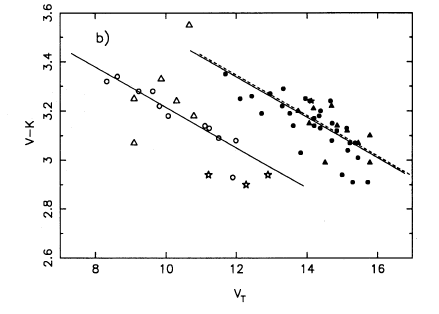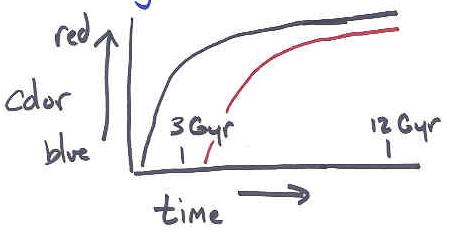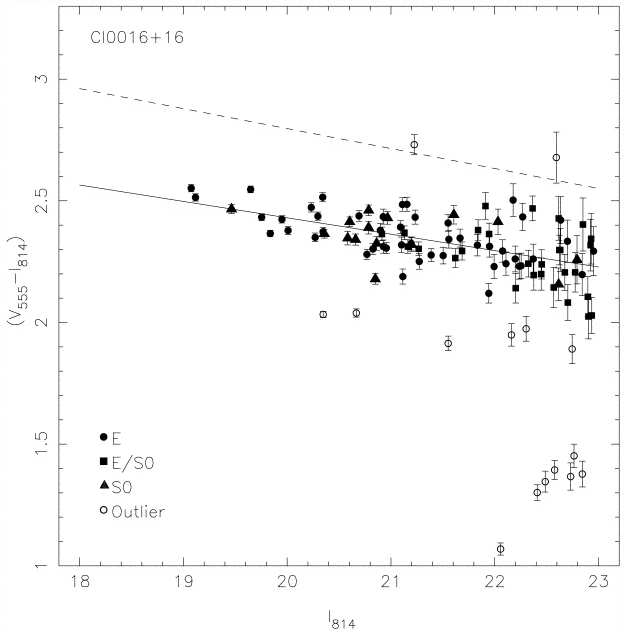This relationship is due to metallicity: more massive galaxies are more metal-rich, and therefore have redder stars. But there is scatter in the relationship: due to differences in ages, perhaps? Bower etal 1992 show that the scatter in the cm relationship is < 0.04 magnitudes in Coma and Virgo.
Think: if all E's formed at the same time, there would be no scatter in the cm relationship. if they formed randomly, there would be lots of scatter. So the scatter tells us how synchronized E formation was.
How can we quantify this?

(from Bower etal 1992)
The scatter in the cm relationship depends on:
- spread in formation age
- rate at which the population gets redder as it ages
- when you observe the population

where beta is a synchronization parameter:
- "pure synchronization" : beta=0
- "random formation": beta=1

For the Bower etal data
- If no synchronization (beta=1): formation time > 13 Gyr ago
- If synchronized (beta=0.1): formation time > 7 Gyr ago.
